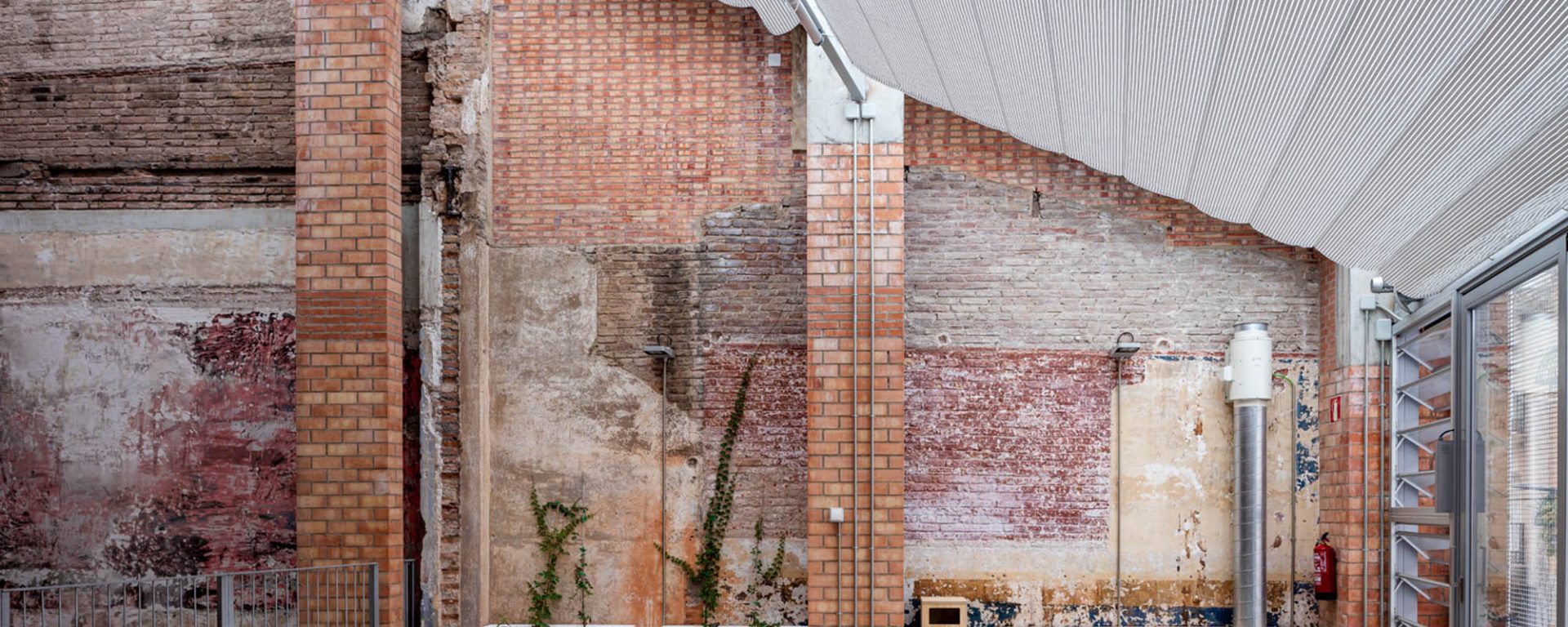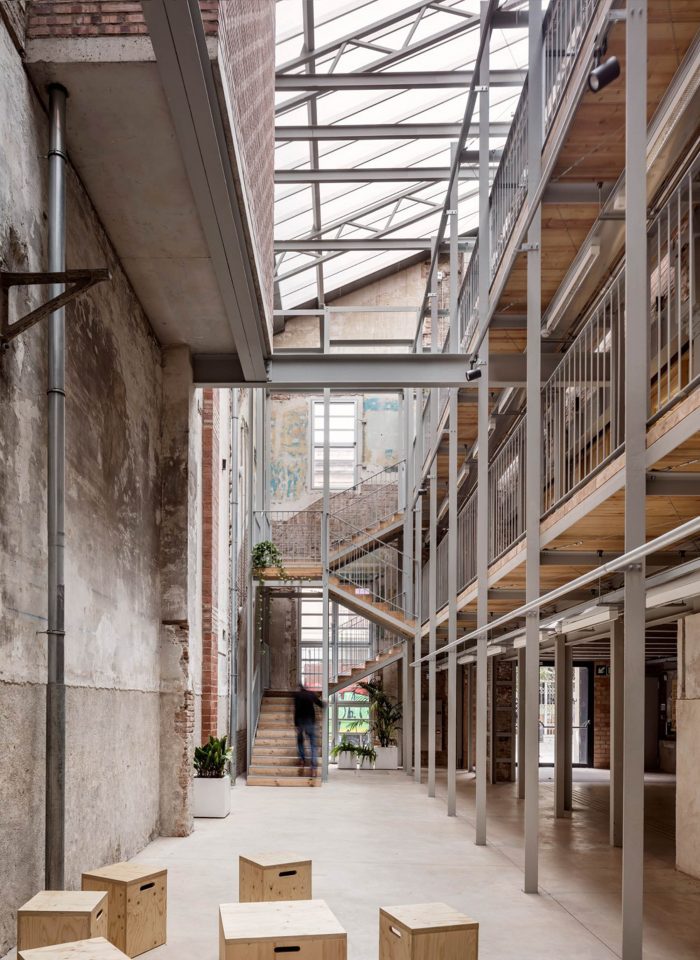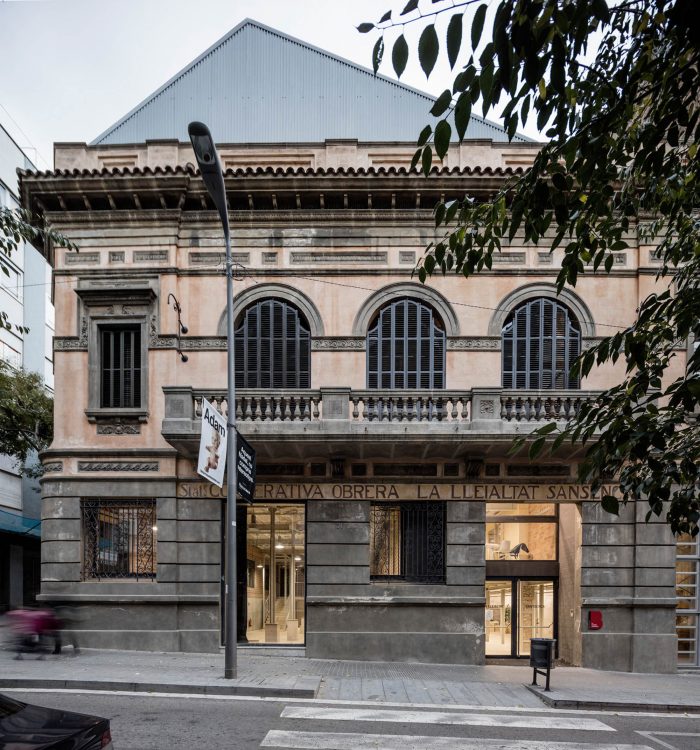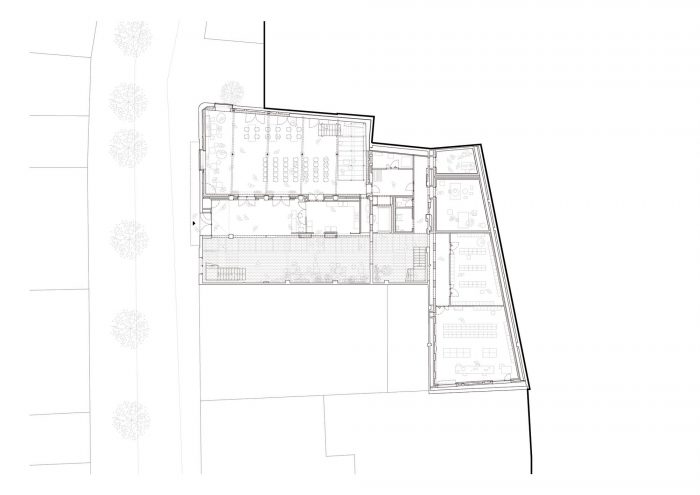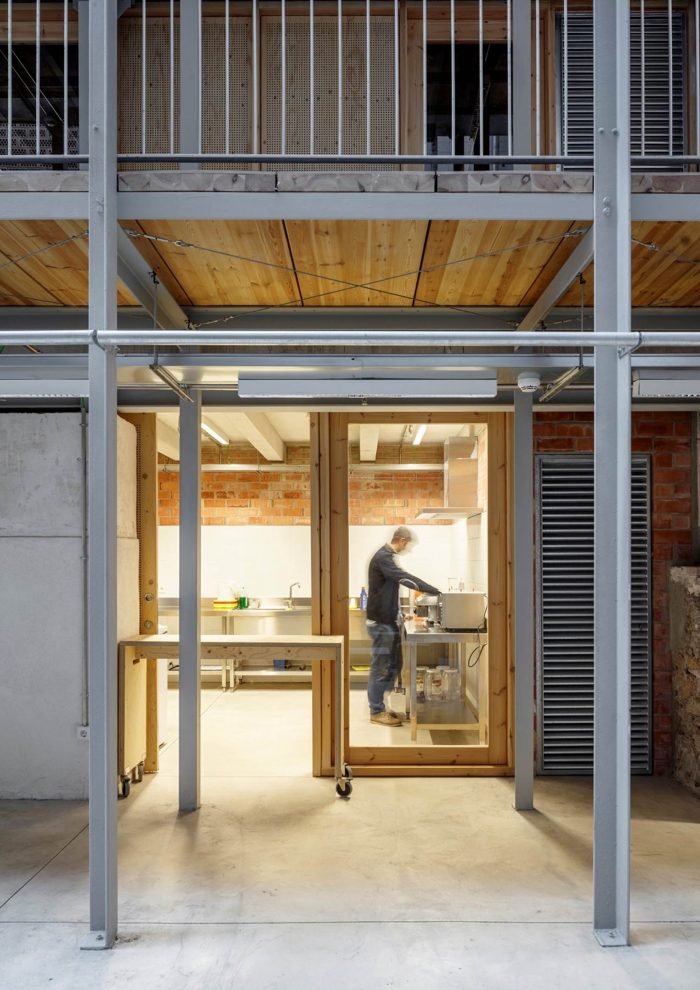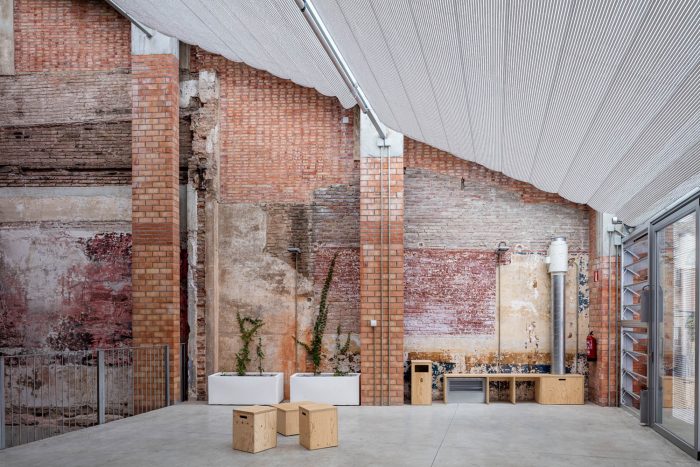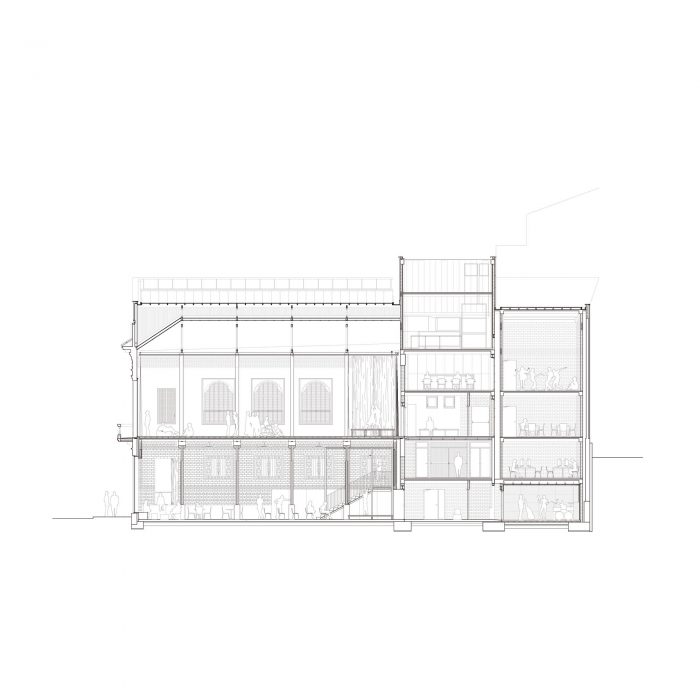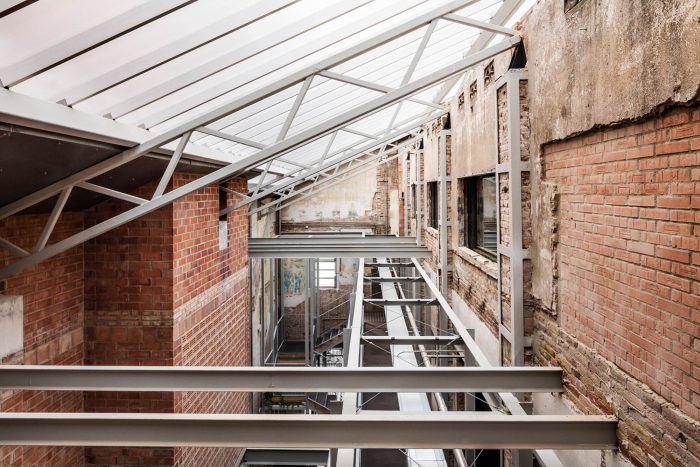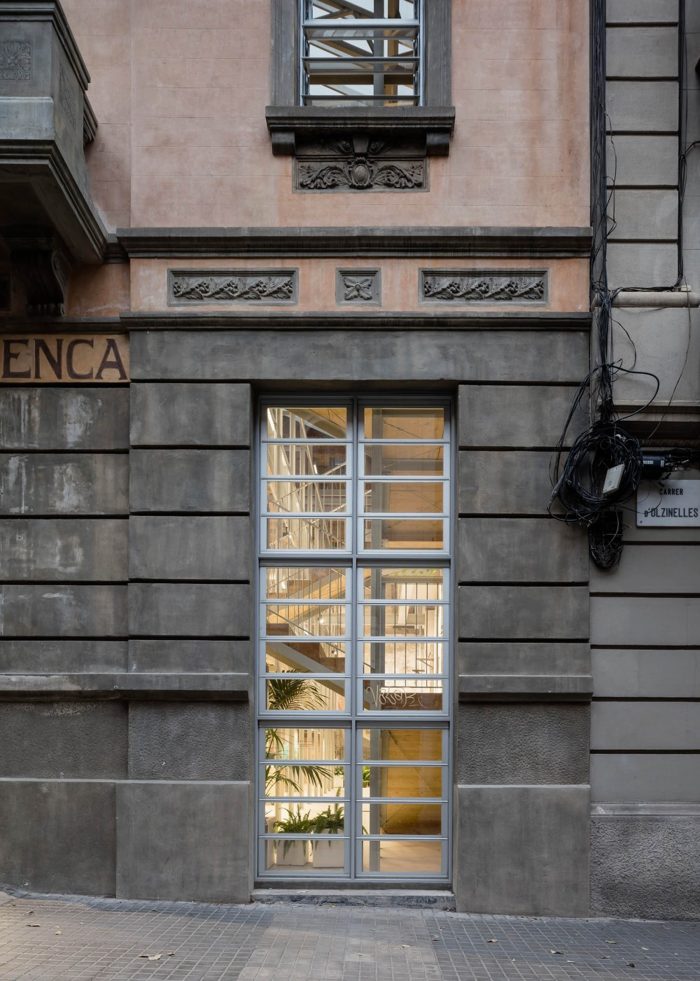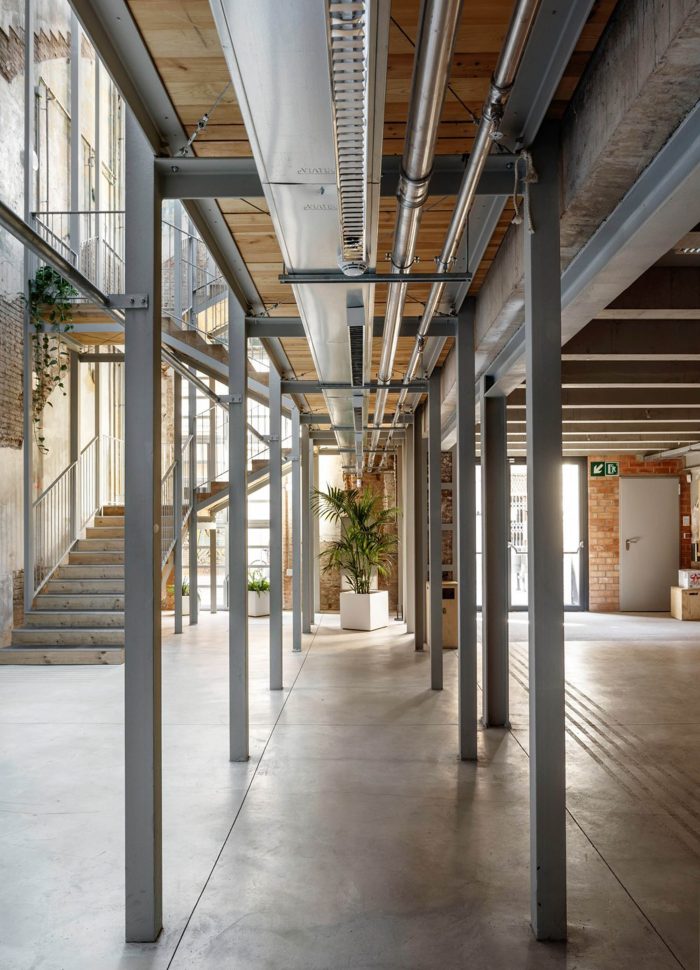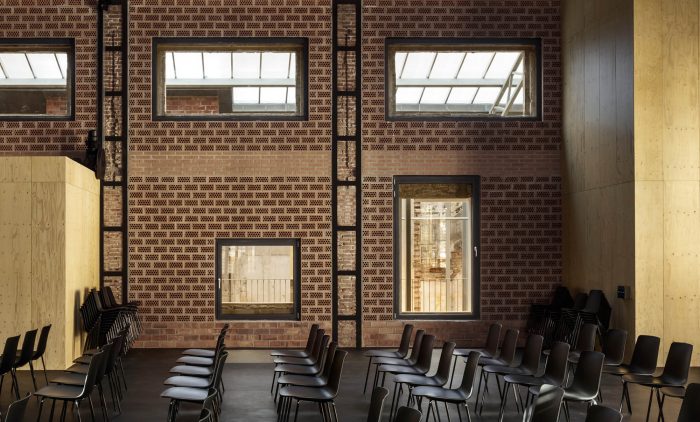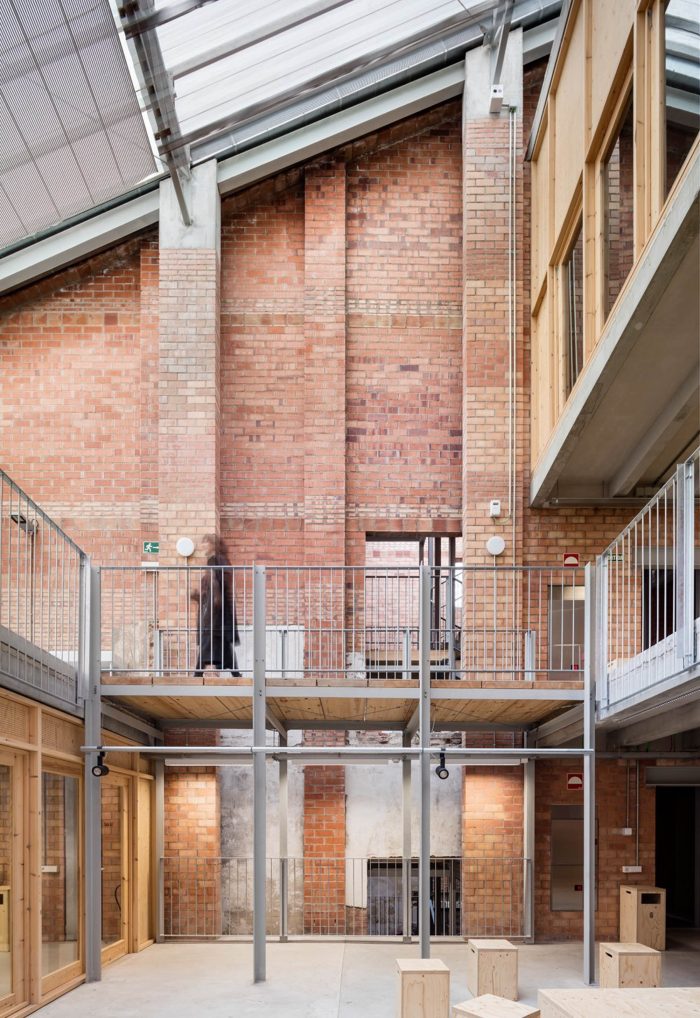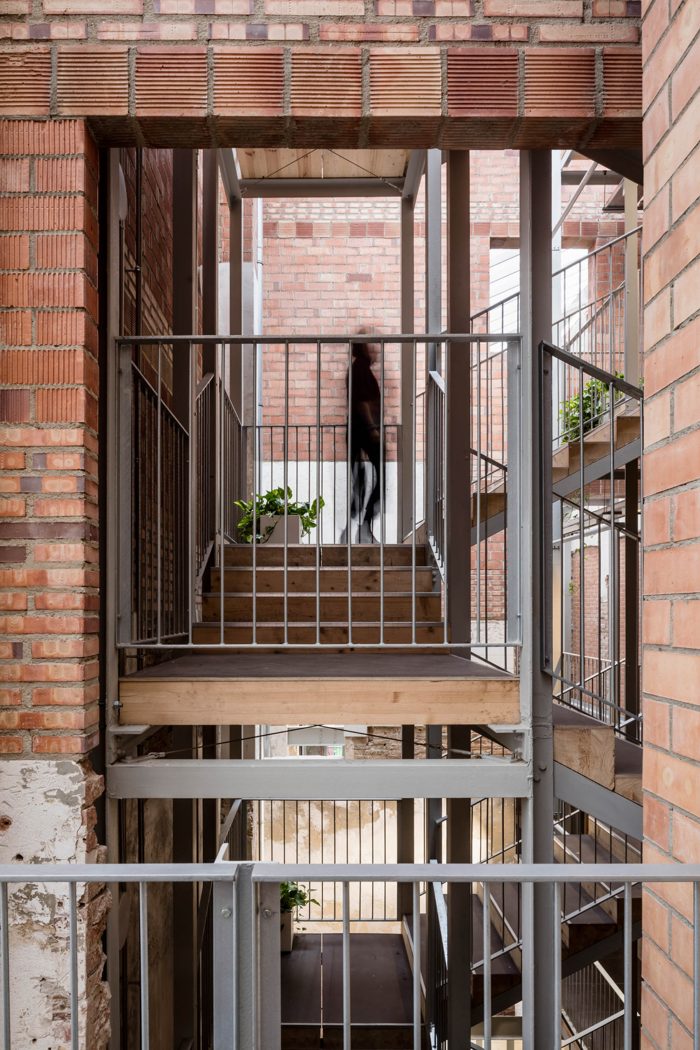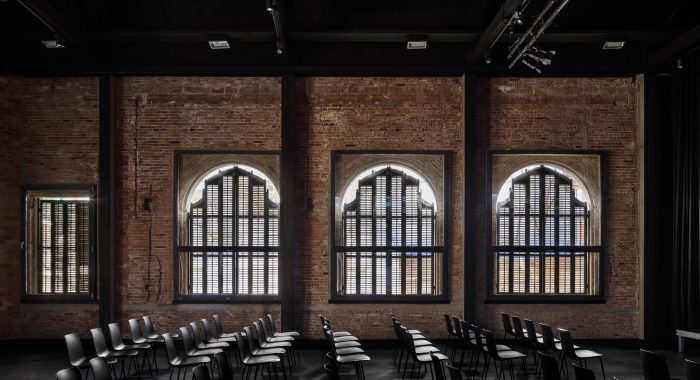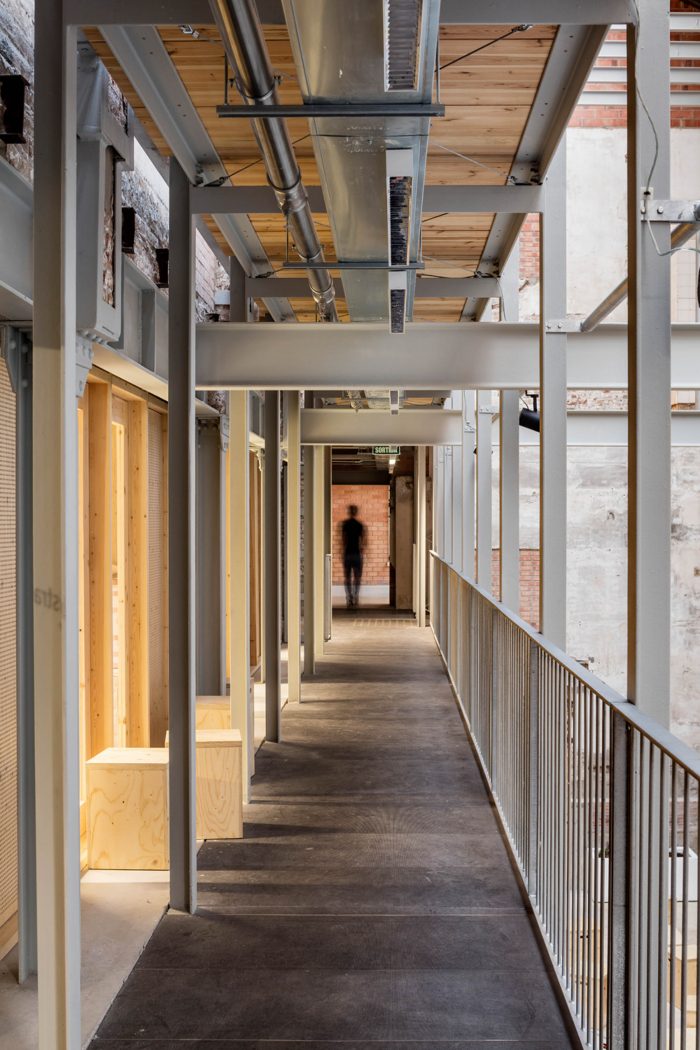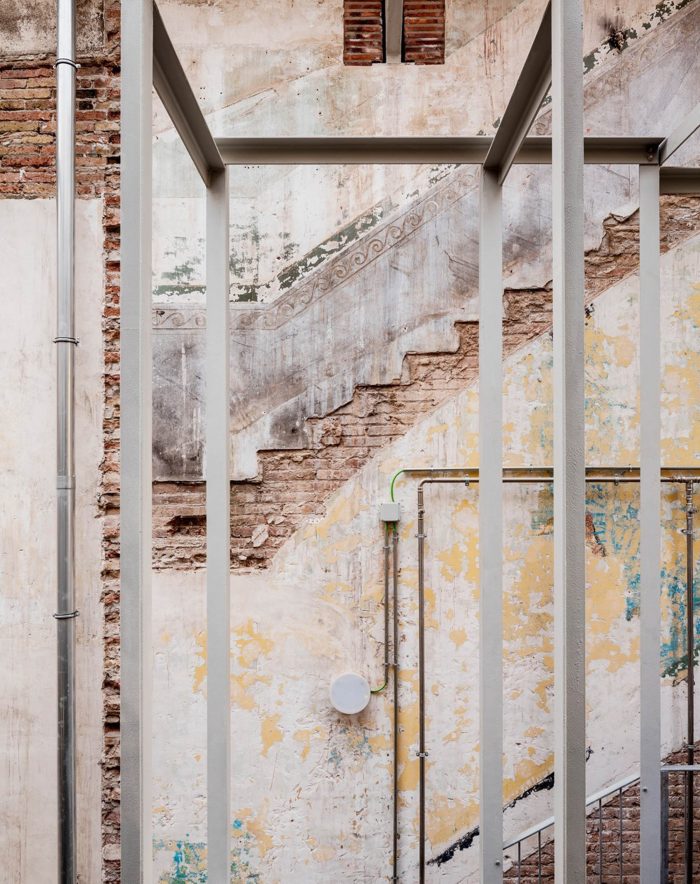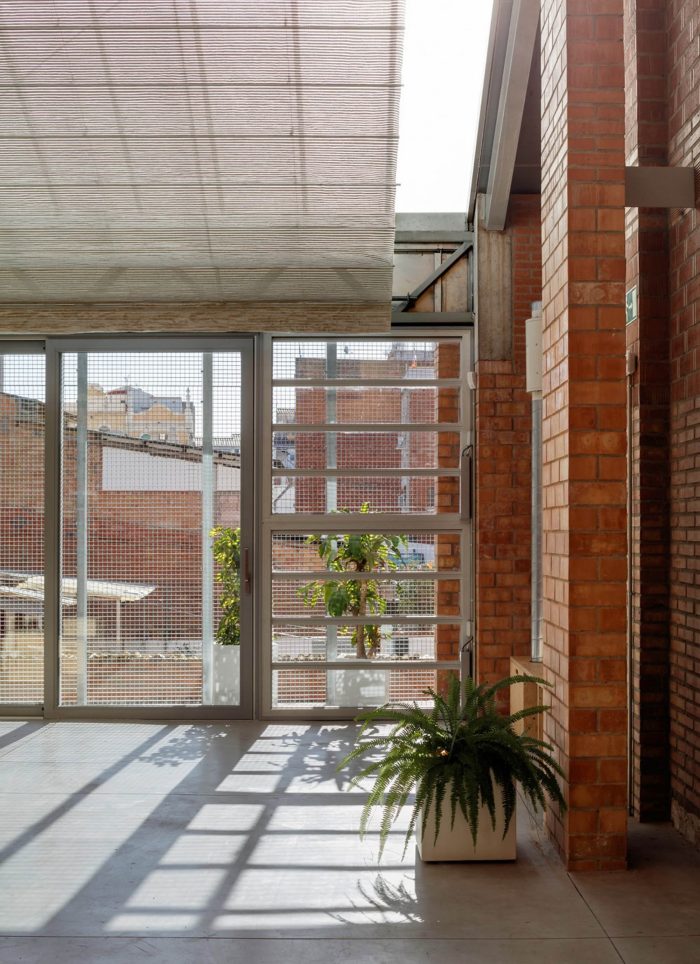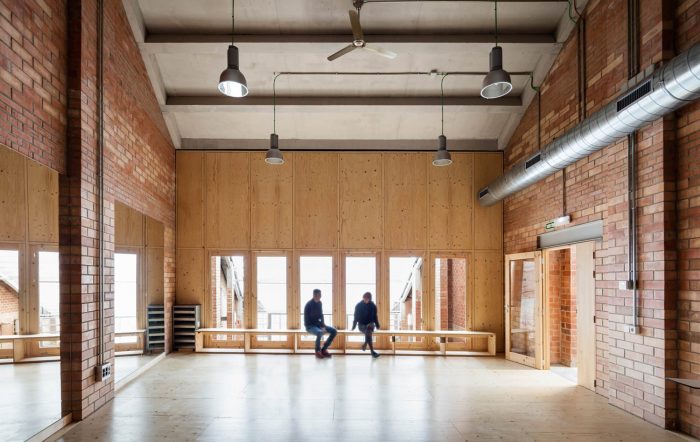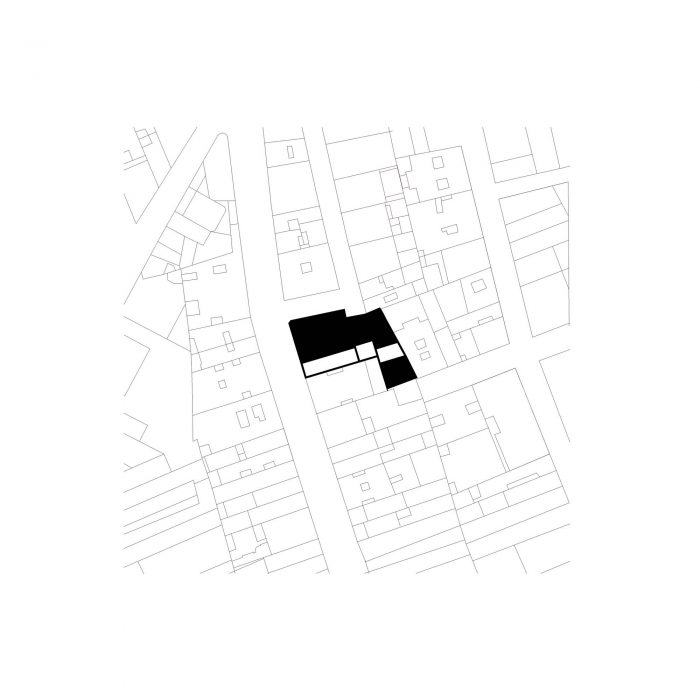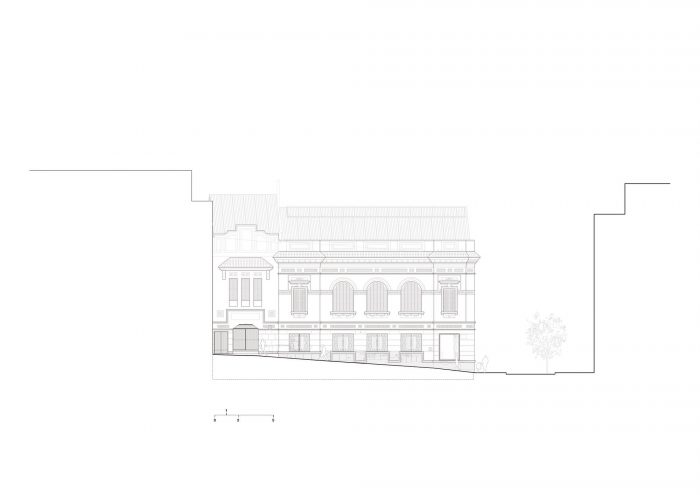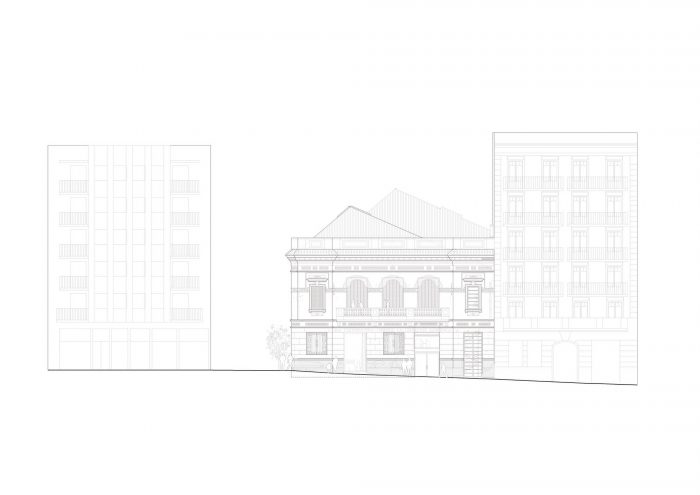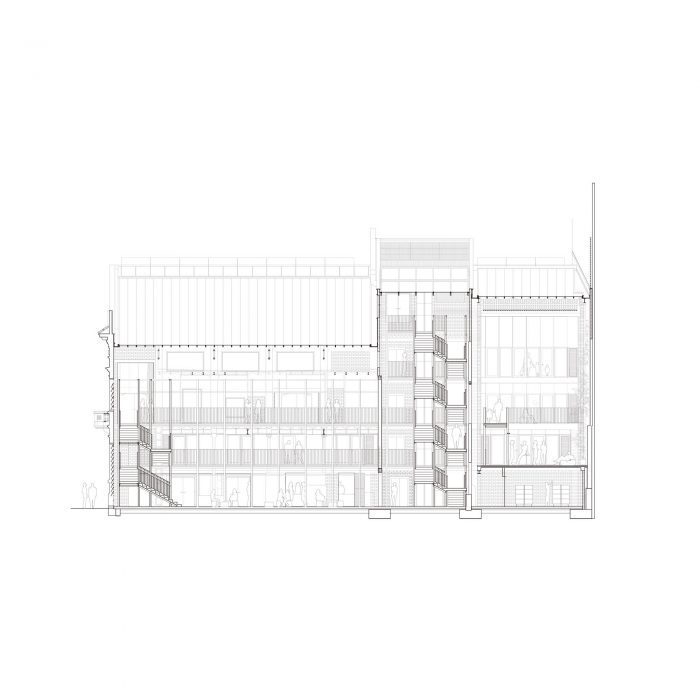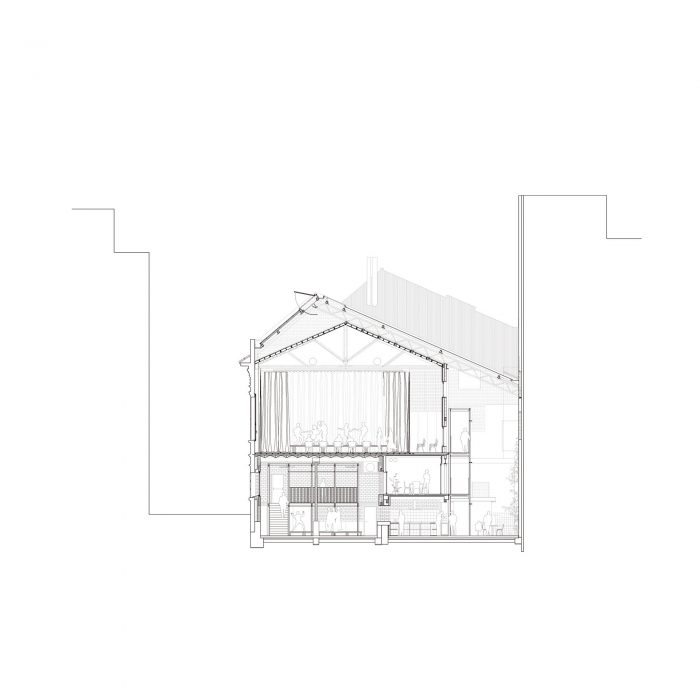三个出发点:了解Lleialtat Santsenca(1928年)的历史价值,这是一个位于Sants社区的老式工人阶级合作社;了解建筑的细节(物理)状态,以尽可能地保持;对2009年由社区组织发起的恢复建筑的整个合作过程保持敏感。为此,我们设定了四个基本目标:第一,利用一切可以利用的原物;第二,定义一个干预策略,标明必要的行动,无论是否保守,允许恢复和增加所有这些空间的潜在用途;第三,建立一个密集的对话–和紧张,如果适当的话–与背景;第四,制定一个可持续的建议,关于现有的工作以及新的干预。
Three starting points: understanding the historic value of Lleialtat Santsenca (1928),an old working-class cooperative in the Sants neighborhood; knowing to the detail the building’s (physical) state to maintain as much as possible; and being sensitive to the whole collaborative process launched in 2009 by neighborhood organizations to recover the building. To this end, four basic objectives were set out: first, taking advantage of everything that could be used from the original; second, defining an intervention strategy marking out the essential actions, conservative or not, allowing to recover and increase the potential uses of all those spaces; third, to establish an intensive dialogue – and tense, if due – with context; and fourth, to develop a sustainable proposal, regarding the work on the existing as well as the new interventions.
该建筑由三个结构体组成:主建筑,位于Olzinelles和Altafulla街上,有两个主要的大厅(一楼是老店,一楼是中庭);中央建筑,可以从Altafulla街上进入;内部建筑,不能从街上进入,呈L形。其余建筑不稳定的卫生条件,以及它们之间的联系不紧密,促使我们提出了一个巨大的纵向空隙,通过从公共空间到私人空间的渐进式发展,将三个体量及其所有空间–新的和旧的–连接起来。空隙的结果是完全拆除了党墙附近到Olzinelles街道的中心线,成为一种内部街道,在第二个结构体中通过扩大现有的采光井来强调。最后,在最后一个结构体量的后面,一个与前两个体量的空隙相邻的三重空间收束了这个序列。空隙的连续配置了一个由 “新 “外墙限制的中庭,与现有的党墙相对,显示出建筑历史的痕迹。中庭为所有空间带来了光线和空气,成为水平和垂直循环的轴心,并为不可预见的项目提供了新的使用潜力。
The building consists of three structural bodies: the main one, onto Olzinelles and Altafulla streets, houses the two main hstreet; and the interior one, without access from the street, which is L-shaped. The precarious hygiene conditions in the rest of the constructions, besides their being poorly connected, encouraged to propose a large longitudinal void, joining the three volumes and all their spaces – new and old – through a gradual progression, from the more public to the more private spaces. The void results from completely demolishing the centerline near the party wall to Olzinelles street, becoming a sort of interior street, emphasized in the second structural volume by enlarging the existing light well. Finally, behind the last structural volume, a triple space contiguous to the void of the two previous volumes wraps up the sequence. The succession of voids configures an atrium limited by ‘new’ facades opposed to the existing party walls, which show traces of the building’s history. The atrium brings light and air to all the spaces, becoming the axis of the horizontal and vertical circulations, and offering the new potential for use for unforeseen programs.
现有的屋顶无法使用,所以只保留了主厅的桁架。新的屋顶建在整个建筑的上方,与三个结构体在体积上有关联:三个拱形屋顶,南面是蜂窝聚碳酸酯,北面是隔热金属板,在金属结构上方,为中庭照明和通风,在最高的角落设有窗户,有利于自然对流。受Lina Bo Bardi的Teatro Oficina的启发,中庭是一个中间的生物调节空间,通过一系列的人行天桥和楼梯组织所有的循环,让人联想到建筑工地的脚手架。该建筑通过基于惯性和隔热的被动策略实现热功能;三个轻质屋顶允许自然采光并有利于通风。
The existing roofs could not be used, so only the trusses in the main hall were maintained. A new roof is built above the whole building, associated volumetrically to the three structural bodies: three gable roofs, with cellular polycarbonate to the south and insulated metal sheet to the north, above a metal structure, illuminate and ventilate the atrium, with windows in the highest corners to favour natural convection. Inspired in Lina Bo Bardi’s Teatro Oficina, the Atrium is an intermediate bio-conditioned space that organizes all the circulations through a series of footbridges and stairs that evoke the image of the scaffolding in a construction site. The building functions thermally through passive strategies based on inertia and insulation; three lightweight roofs permit natural lighting and favour ventilation.
通过增加屋顶的容积,可以增加太阳能的获取:在冬季,通过室内空间的热回收系统收集热量;在夏季,中庭顶部的空气被重新加热,通过自动传感器打开屋顶的脊窗,迫使对流释放热空气。在冬季,气候控制的空间释放出暖气,使中庭温度升高;在第三个主体中,由于辐射过大,一个带有太阳过滤器的通风室在冬季和夏季优化了太阳辐射。
By increasing the volume of the roofs it is possible to increase solar gain: in winter heat is collected thanks to a heat recovery system for the interior spaces; in the summer, the air in the top part of the atrium is reheated, forcing a convection which releases the hot air by opening the roof Ridge windows, actioned by automatic sensors. In winter the climate controlled spaces release warm air, tempering the Atrium; in the third body, due to the excess of radiation, a ventilated chamber with a sun filter optimizes solar caption in winter and summer.
建筑师:HARQUITECTES
面积:1750 m²
年份:2017
摄影:Adrià Goula
作者:David Lorente, Josep Ricart, Xavier Ros, Roger Tudó
合作者:Montse Fornés, Jordi Mitjans, Berta Romeo, Carla Piñol, Blai Cabrero Bosch, Toni Jiménez, Jorge Suárez-Kilzi
Environmental Consulting:Societat Orgànica
环境咨询:Societat Orgànica
结构:DSM arquitectes
安装:VIDAL enginyeria i consultoria
声学:i2A
测量:Aumedes DAP
外墙修复:Chroma rehabilitacions integrals
视听设备:ESITEC enginyeria
奖项:Premi Ciutat Barcelona 2017
城市:巴塞罗那
国家:西班牙
Architects: HARQUITECTES
Area: 1750 m²
Year: 2017
Photographs: Adrià Goula
Author Architects:David Lorente, Josep Ricart, Xavier Ros, Roger Tudó
Collaborators:Montse Fornés, Jordi Mitjans, Berta Romeo, Carla Piñol, Blai Cabrero Bosch, Toni Jiménez, Jorge Suárez-Kilzi
Environmental Consulting:Societat Orgànica
Structure:DSM arquitectes
Installations:VIDAL enginyeria i consultoria
Acoustics:i2A
Measurements:Aumedes DAP
Facade Restoration:Chroma rehabilitacions integrals
Audiovisual Installation:ESITEC enginyeria
Awards:Premi Ciutat Barcelona 2017
City:Barcelona
Country:Spain

